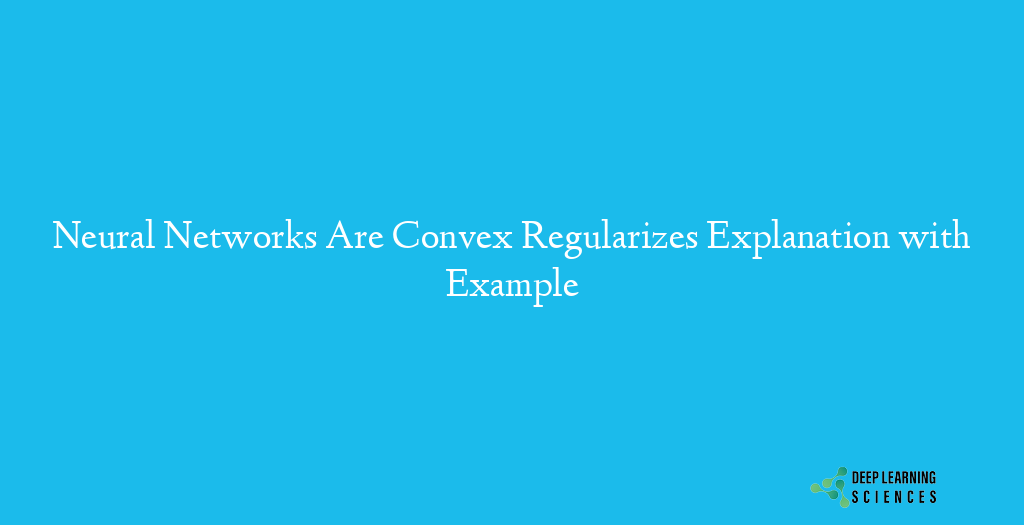In this article on DLS you will learn how Neural Networks Are Convex Regularizes. A complete explanation is provided that will remove all of your confusion.

The develop actual representations of two-layer NN (neural networks) with rectified linear units in terms of a single convex code with a number of variables polynomial in the number of training samples data and number of hidden neurons of networks. Overall theory utilizes semi-infinite duality and minimum standard regularization. They show that certain standard multi-layer CNN (convolutional neural networks) are equivalent to L1 regularized linear models in a polynomial-size discrete Fourier feature space. The exact semi-definite programming representations of convolutional and fully connected linear multi-layer networks which are polynomial size in both sample size and dimension.
Extend dimensional, polynomial size convex program or code that globally solves the training problem for both layer NN (neural networks) with the rectified linear unit of the activation functions. The main key to our analysis is a generic convex method we introduce, and is of independent interest for other non-convex related problems. We further prove that strong duality manages in a variety of architectures.
The training of CNN (Convolutional Neural Networks) with ReLU activations and develop the exact convex optimization formulations with a polynomial complexity with respect to the number of samples data, the total number of neurons, and data dimension. Moreover, we develop a convex analytic framework utilizing semi-infinite both to obtain equivalent convex optimization problems for several two- and three-layer CNN (Convolutional Neural Networks) architectures. The first proves that two-layer CNN (Convolutional Neural Networks) can be globally optimized via an L2 norm regularized convex program. They show that multi-layer circular CNN (Convolutional Neural Networks) training problems with a single ReLU layer are equivalent to an L1 regularized convex program that persuades sparsity in the spectral domain. They extend these results to three-layer CNN (Convolutional Neural Networks) with two ReLU layers. Present extensions of our approach to a different layer of pooling methods, which elucidates the implicit architectural bias as convex regularizes.
Conclusion of Neural Networks Are Convex Regularizes:
Convex reformulations related problems arising in the training of both and three-layer CNN (convolutional neural networks) with ReLU activations. first of all, note that three-layer architectures with two ReLU layers are significantly more challenging due to the complex and combinatorial behavior of the composition of multiple ReLU layers. Introduced the notion of sign patterns unlike. Then, using this new notion of sign patterns and convolutional hyperplane arrangements, we are able to prove the fully polynomial-time trainability of CNNs Convolutional Neural Networks) that this is an important result with practical or theoretical consequences and precisely connects CNNs to L1 regularized convex models. In contrast, directly applying the complexity, which is exponential in N. They extend these results to three-layer CNN (Convolutional Neural Networks) with two ReLU layers. Present extensions of our approach to different layers of pooling methods, which elucidates the implicit architectural bias as convex regularize. Our strong duality results in A.7 show that a globally optimal solution has at most n+1 non-zero vectors. Even though we have 2Pconv vectors in the convex program, the solution will be sparse such that only m∗ of the 2Pconv vectors will be non-zero, which corresponds to optimal neurons in the network. The value of m∗ can be determined by solving the convex program in full polynomial time. We have the worst-case upper bound m∗≤n+1 due to the proof.